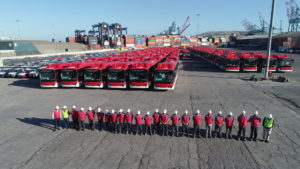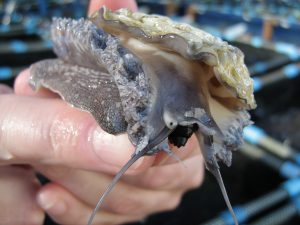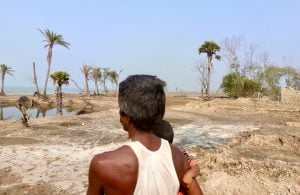Madeleine Redfern is the mayor of Iqaluit in Canada, one of the largest Arctic cities. She received her law degree from the University of Victoria, and worked for Justice Charron at the Canadian Supreme Court. She was one of the mayors at the recent Arctic Mayors Forum in Tromso, Norway.
In some ways the challenges she describes are similar to that of communities in the Himalayas, which are also dispersed populations, often of indigenous peoples, and facing much harsher impacts of climate change than those in the plains. The cooperation among municipalities in the Arctic, and the inclusion of indigenous communities, and the role of women, offers important lessons for the Himalayas.
Mayor Redfern spoke to thethirdpole.net of the challenges faced by communities in the Arctic, particularly the indigenous peoples of the region, and what municipalities can do in dealing with them.
Omair Ahmad (OA): Can you tell us how the idea of an Arctic Mayors’ Forum came about?
Madeleine Redfern (MR): We had the first meeting of the Arctic mayors in 2017, at Fairbanks (Alaska, USA). Since then we have been discussing how we can cooperate better. This meeting was to develop a work plan to focus on a strategy on how to make our presence part of formal organisational structures.
OA: What is the need for such a forum?
MR: The Arctic municipal communities are not really represented at international gatherings that discuss the challenges of the region. These are usually dominated by national and international-level decision makers. But the responsibility to deliver services in these regions rests entirely on municipal authorities. We are best placed to answer questions on what infrastructure, energy, transport and other resources are needed.
Most international commentary is dominated by discussions on polar bears and ice, and while these are important, the issues of weather variation and permafrost melting are also important, and have direct consequences for people that live in the region. A great deal of attention in the IPCC (Intergovernmental Panel on Climate Change) reports has been on the sea (level) rise due to land ice melting and its consequences on small island states. That melting is also playing havoc on Arctic communities, but this gets far less attention.
OA: What can Arctic mayors do to deal with the challenges?
MR: It is important for national and international actors working on the Arctic to pay attention to municipalities. We can provide the real examples of how we cope with the coming challenges. For me it is useful to see how other Arctic cities, across national borders, are dealing with energy, waste management and telecommunication challenges. The national governments are starting to realise the value of our input. It takes a little while to convince people, but I now get support to attend meetings at places like Arctic Frontiers because the national governments are now realising that it is important to include our perspective.
OA: The Arctic Council is the only international organisation other than the ICC, which formally recognises the role of indigenous community groups. Why is it difficult for them to be heard, and how does the Arctic Council make a difference?
MR: There are multiple reasons that indigenous communities in the Arctic region do not get enough representation. Media presence is concentrated in larger capital areas, and so they are less likely to report on the effects on those in dispersed, far-off regions. Secondly, smaller communities, remote from capital areas, also have fewer resources to influence national debates.
The presence of indigenous community groups as part of the formal structure of the Arctic Council means that they input directly into the research findings that underlie the decisions made there. This is tremendously important, and why we think that the inclusion of municipalities in the formal structure may help strengthen the voices of indigenous actors, and vice versa.
OA: How did you get involved in municipal politics?
MR: It was a natural progression for me to join politics. I had a background in business and law, and as a woman and a member of an indigenous community, these were just these conversations I had. My work experience meant I was familiar with the business and NGO actors, as well as the latest developments in law. As a result I ended up engaging easily beyond local actors to also focus on external forces that were impacting our region. The fact that I could “speak their language” also meant that external actors found value in a perspective from local communities, and incorporating more perspectives leads to better, more sustainable solutions.
OA: The forum had mostly women mayors; does gender play a role?
MR: There are still only a few of us, even in the Arctic region, not a majority of the mayors, but it was the women mayors that recognised the value and need to network, and worked to formalise it.
OA: There did not seem to be anybody representing Russian municipalities; why is that?
MR: We are still working on including our Russian colleagues, and there are some challenges there, but we are hopeful they will be part of the formal process soon.
![<p>Mayor Redfern at the Arctic Mayors Forum [image by: Alberto Grohovaz/Arctic Frontiers]</p>](https://dialogue.earth/content/uploads/2019/01/Redfern.jpg)

![Gagas valley in Uttarakhand, irrigated by the Gagas river [image by: Hridayesh Joshi]](https://dialogue.earth/content/uploads/2019/02/Springs1-300x172.jpg)
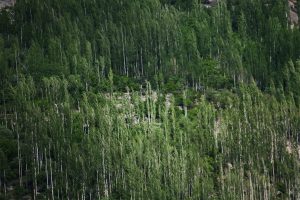
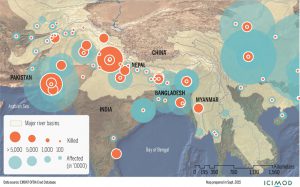
![Feiringbreen glacier in the Arctic, being studied by Indian scientists for clues to the South Asian monsoon [Image by: National Centre for Polar and Ocean Research, India]](https://dialogue.earth/content/uploads/2018/11/Arctic_Feiringbreeen_glacier-300x200.jpg)
